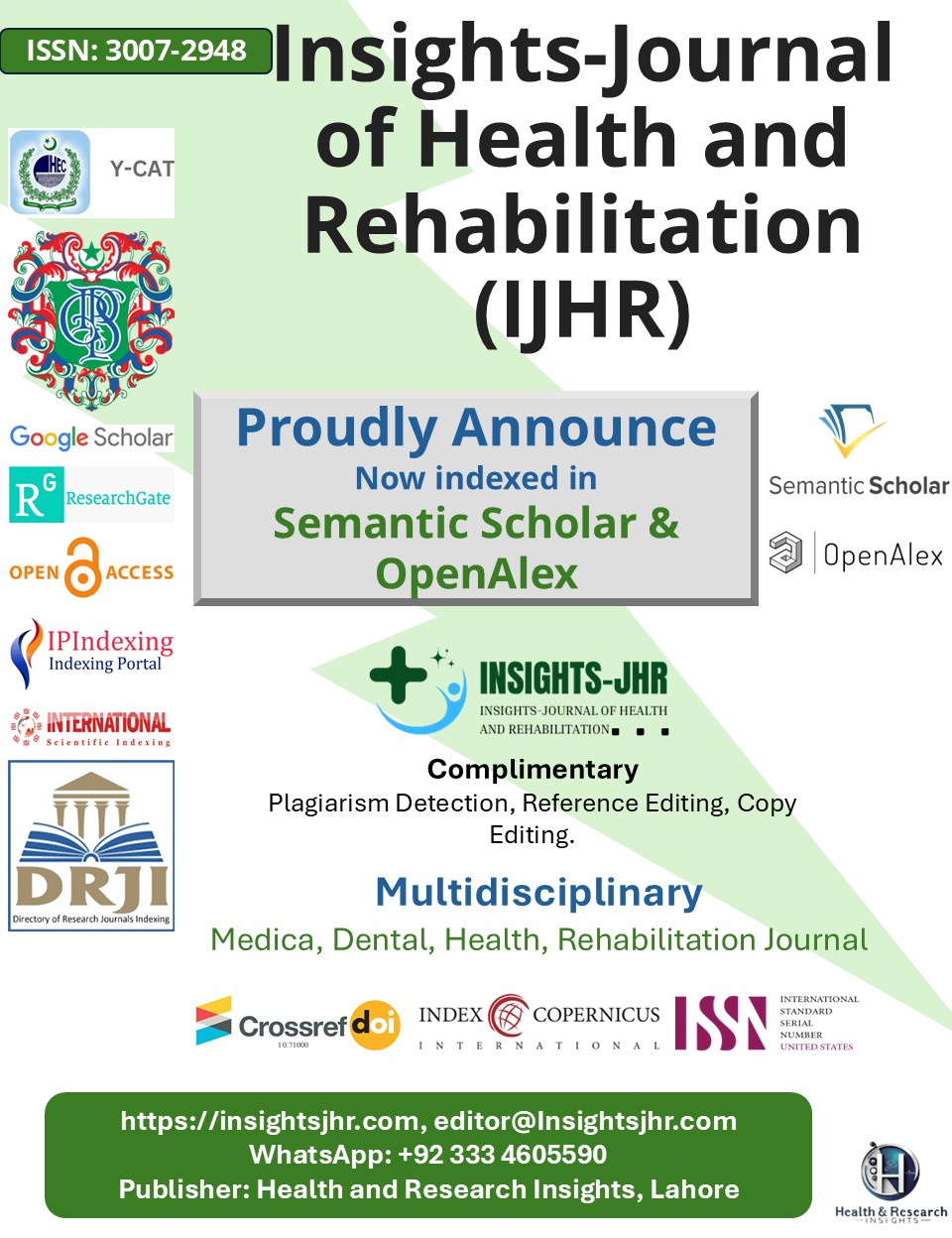EFFECTS OF BRUNNSTROM MOVEMENT THERAPY VERSUS MIRROR THERAPY ON UPPER LIMB FUNCTION AND GRIP STRENGTH AMONG STROKE SURVIVORS
DOI:
https://doi.org/10.71000/9sap7c44Keywords:
Grip strength, Ischemic stroke, Mirror therapy, Motor recovery, Stroke rehabilitation, Upper limb function, Upper extremityAbstract
Background: Stroke is a leading cause of disability worldwide, often resulting in upper limb motor impairment and reduced grip strength. Effective rehabilitation strategies are essential to restore functional independence in stroke survivors. Brunnstrom Movement Therapy (BMT) and Mirror Therapy (MT) are widely used neurorehabilitation techniques, each leveraging distinct mechanisms to enhance motor recovery. However, the comparative efficacy of these interventions in improving upper limb function and grip strength remains an area of investigation.
Objective: To compare the effects of Brunnstrom Movement Therapy and Mirror Therapy on upper limb function and grip strength in stroke survivors.
Methods: This experimental study included 32 stroke survivors, equally divided into two groups: the BMT group (n=16) and the MT group (n=16). Participants aged 40–65 years with ischemic or hemorrhagic stroke and upper limb motor impairment (Brunnstrom stages 2–5) were recruited. Both groups underwent 45-minute therapy sessions, five times per week, for six weeks. Upper limb function was assessed using the Fugl-Meyer Assessment for Upper Extremity (FMA-UE), while grip strength was measured using a handheld dynamometer. Within-group and between-group analyses were conducted using SPSS version 22, with statistical significance set at p < 0.05.
Results: Both therapies significantly improved upper limb function and grip strength (p < 0.001). The BMT group exhibited a greater improvement in FMA-UE scores (45.8 ± 4.9 vs. 42.3 ± 5.0, p = 0.04) and grip strength (24.6 ± 3.5 kg vs. 22.1 ± 3.3 kg, p = 0.03) compared to the MT group. The percentage increase in FMA-UE was 29.01% for BMT and 17.50% for MT, while grip strength improved by 33.70% in the BMT group and 18.18% in the MT group.
Conclusion: Both interventions contributed to upper limb motor recovery, but Brunnstrom Movement Therapy demonstrated superior effectiveness in improving motor function and grip strength. These findings suggest that task-specific training may yield better functional outcomes in stroke rehabilitation.
Downloads
Published
Issue
Section
License
Copyright (c) 2025 Muhammad Danial Baig Chughtai, Muhammad Usama Ishfaq, Faiza Khan, Esha Malik, Wajeeha Iqbal , Zarish Younas, Jahanzeb Ahmed (Author)

This work is licensed under a Creative Commons Attribution-NonCommercial-NoDerivatives 4.0 International License.







